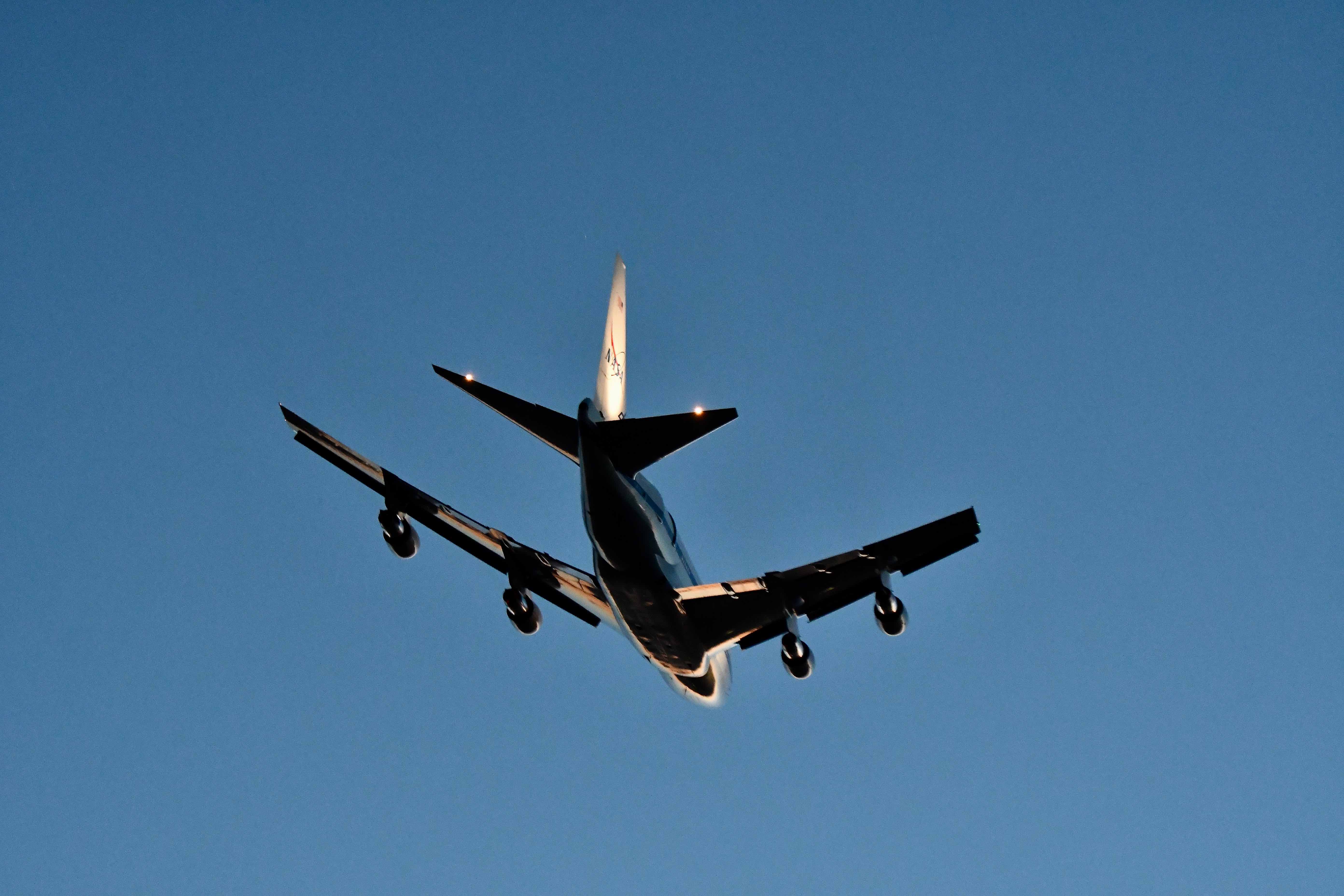It looks like you're using an Ad Blocker.
Please white-list or disable AboveTopSecret.com in your ad-blocking tool.
Thank you.
Some features of ATS will be disabled while you continue to use an ad-blocker.
3
share:

The Stratospheric Observatory for Infrared Astronomy (SOFIA) airborne observatory has begun making observations. Mounted in the back of a modified 747 Jumbojet, SOFIA is an infrared telescope of 100" aperture, and able to fly above 99% of the moisture in the Earth's atmosphere. This allows it to obtain research grade pictures at less cost than launching a similarly capable space based telescope like the Spitzer (IR) or Hubble (Visual/UV)
For comparison, Spitzers mirror is .85meters in diameter, and the telescopes total cost was about 720 million dollars. The Hubble Space Telescope (HST) has a 2.4m primary mirror, along with a corrector plate. It is an expensive Ritchie-Cretien (spelling?) type of Cassigerian telescope, and cost around 1.5 Billion dollars, before all the servicing missions and the new mirror. BTW, that cost estimate is just that, and estimate, and was the lowest I found. I also saw one up to 2.5 Billion. SOFIA has a 2.5m primary mirror and the system cost about 650 million dollars.
The advantages of SOFIA over an orbiting observatory is that, it lands. It can be upgraded and serviced without the cost of a shuttle mission. Which soon of course will be impossible anyways since the shuttle is retiring.
Flying at the planned observational altitude of 41,000 feet, SOFIA will be able to get 80% the resolution of a space telescope of the same size.
SOFIA is not the first aerial telescope, first there was the Convair (Galileo) and Lear Jet Observatory, then the Kuiper observatory, mounted inside a C141. More info, Flying Telescopes PDF
BTW, SOFIA missions are expected to run 8 hours/mission, 3 missions/week for 40 weeks/year, for 20 years.
Note that SOFIA take IR pictures, and IRs wavelength is some 37 times longer than the visual, so the IR pictures will be 37 times less resolution than the equivilent size visual telescopes,

More info SOFIA Science Center
[edit on 3-6-2010 by JJRichey]
reply to post by JJRichey
I just ran across an article about this on discovery.com here:
news.discovery.com...
And I wondered if anyone had started a thread about it so searched and found this one. Strange there are no replies to this, but I missed it myself when it was initially posted.
Sure it doesn't have the launch costs, but all the fuel to keep it airborne can't be cheap, not to mention the carbon footprint.
I wonder how the economics really works out versus a space based telescope. Maybe it's really not practical to launch a 2.5 meter telescope into orbit? It does say the Spitzer telescope is 3 times smaller.
[edit on 15-6-2010 by Arbitrageur]
I just ran across an article about this on discovery.com here:
news.discovery.com...
And I wondered if anyone had started a thread about it so searched and found this one. Strange there are no replies to this, but I missed it myself when it was initially posted.
The 2.5-meter telescope -- three times larger than NASA's infrared Spitzer Space Telescope -- is mounted into a modified Boeing 747 jet that is expected to fly two- to three times a week for the next 20 years.
Operating at 45,000 feet -- above most of Earth’s infrared-absorbing water vapor -- SOFIA is nearly as capable as a space-based telescope, without the launch costs. It also can be easily upgraded with a variety of science instruments, outfitted for several different types of studies and flown to view particular targets.
Sure it doesn't have the launch costs, but all the fuel to keep it airborne can't be cheap, not to mention the carbon footprint.
I wonder how the economics really works out versus a space based telescope. Maybe it's really not practical to launch a 2.5 meter telescope into orbit? It does say the Spitzer telescope is 3 times smaller.
[edit on 15-6-2010 by Arbitrageur]
new topics
-
Have you noticed?? Post Election news coverage...
World War Three: 12 seconds ago -
Georgia appeals court disqualifies DA Fani Willis from Trump election interference case
US Political Madness: 2 hours ago
3

